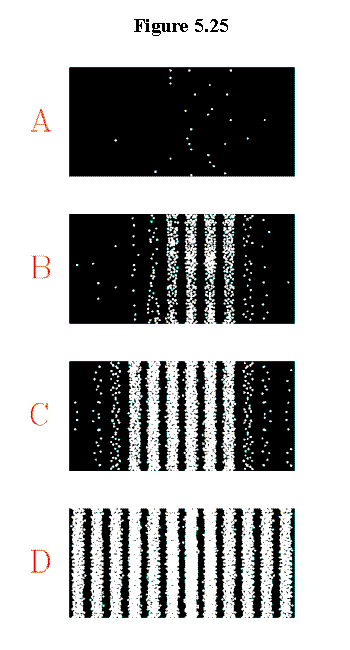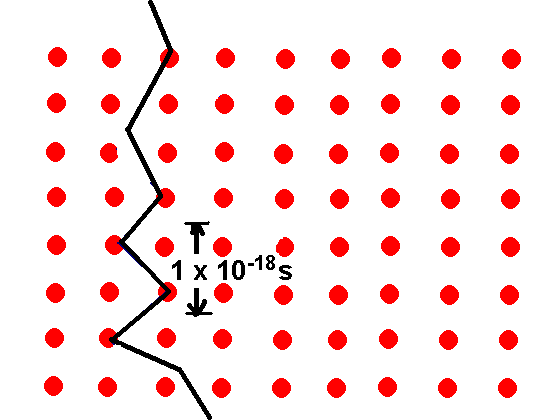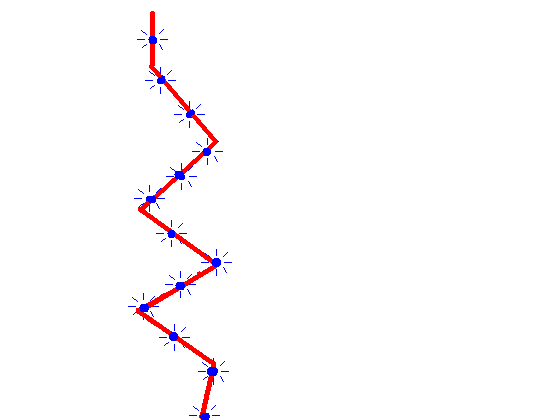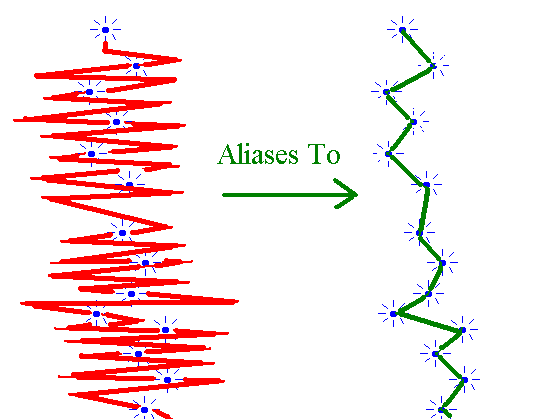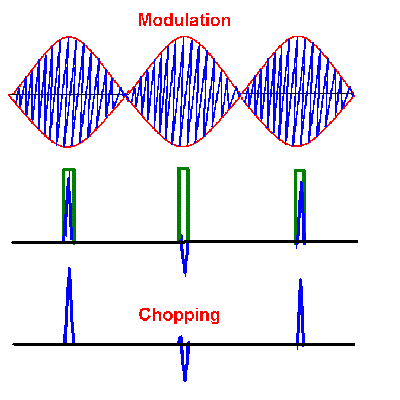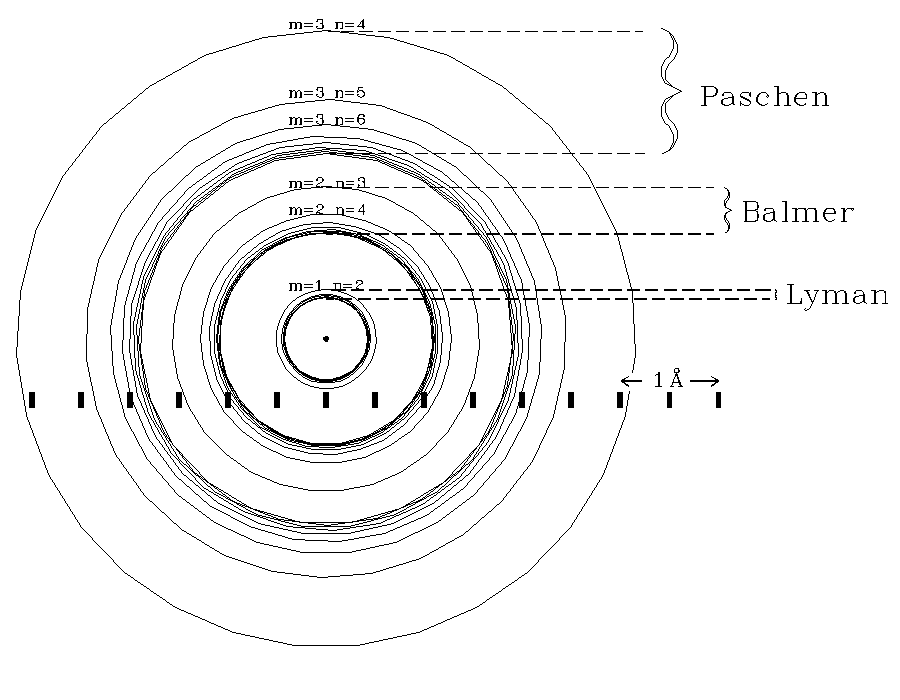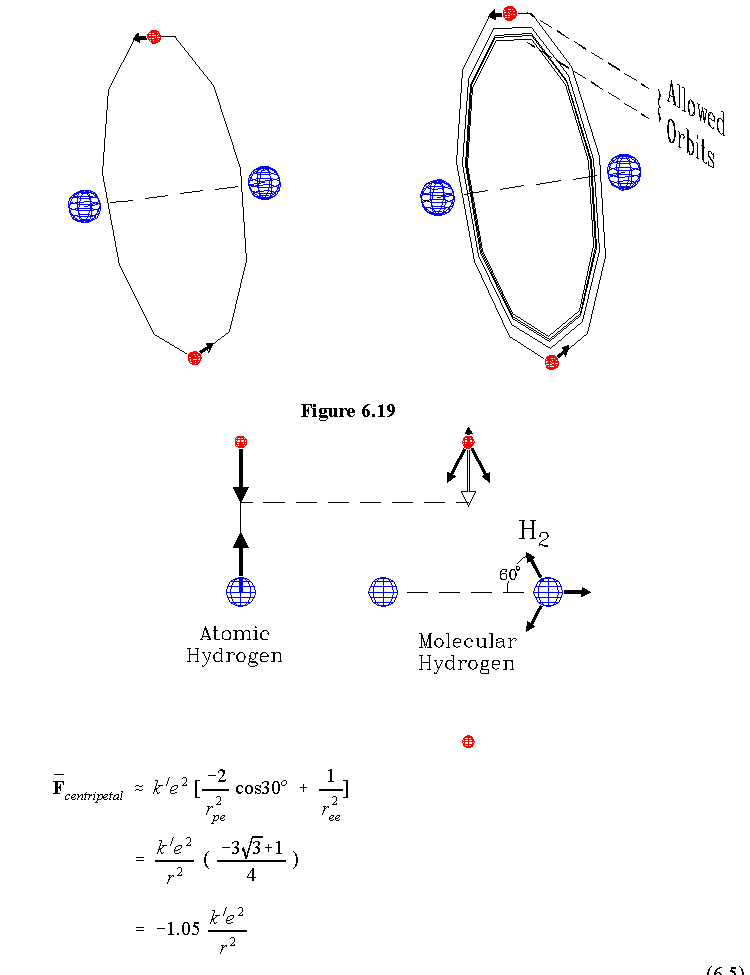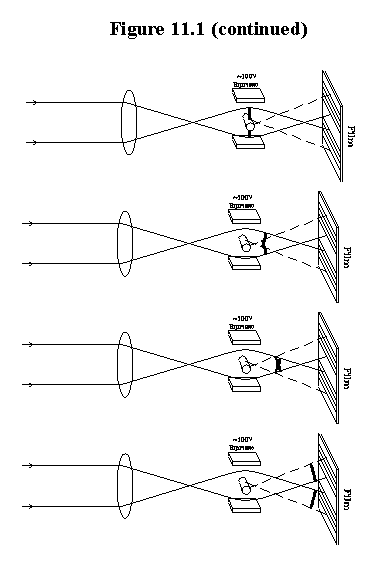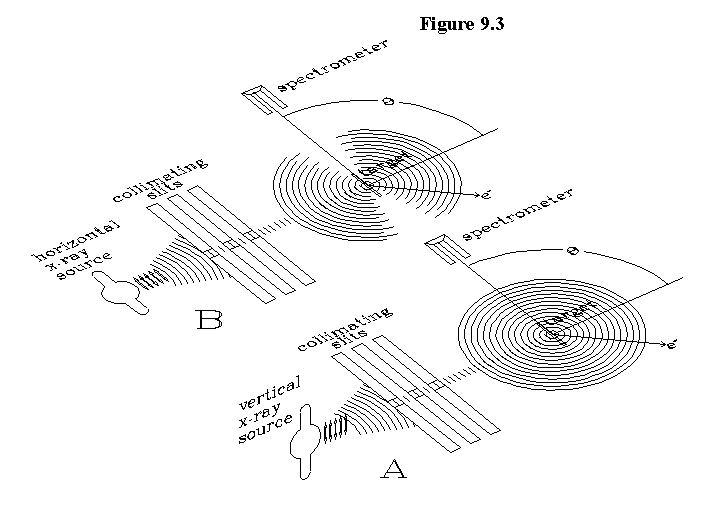andrewgray
Registered Senior Member
This discussion has been moved here:
7 Reasons to Abandon Quantum Mechanics
Here are the biggest problems with QM as I see it and the solution to these problems:
1) The Photoelectric Paradox.
The photoelectric effect setup for a 10 eV UV photon is like this:
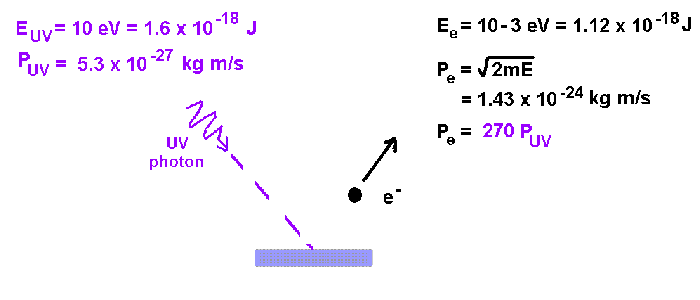
A UV photon is incident on a metal plate with an energy of approximately 10 eV. An electron with the max energy is ejected with an energy of approximately
E[sub]max[/sub] = hv - Ф = 10 eV - 3 eV = 1.12 x 10[sup]-18[/sup] J
This implies that the photoelectron has a momentum of P[sub]e[/sub] = √(2mE[sub]max[/sub]) , or
|P[sub]e[/sub]| = 270 |P[sub]UV[/sub]|
Check the arithmetic yourself. This is no arithmetic error. The photoelectron ends up with 270 times the momentum of the UV photon. Think about this for a moment...
Now, it is possible for QM theory to conserve momentum in this case by giving the metal plate a huge momentum in the "backwards" direction. This is how QM must respond. The metal plate recoils with a large momentum in the "backwards" direction, away from the photoelectron:
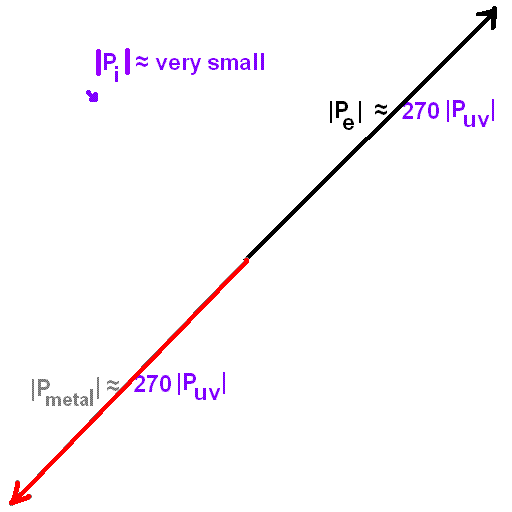
Just how the photon in QM theory gives the metal plate such a large momentum in the transverse direction is not exactly clear, and a little doubtful in my opinion. However, this is not all.
It is also fairly well known that the most likely angle for the electron ejection is at 90[sup]o[/sup]. See
http://prola.aps.org/abstract/PR/v37/i10/p1233_1
So this phenomena seems like a transverse electric force reaction, plain and simple. And not a particle collision. If this is the case, then the polarization of the wave must come into play:

If I am correct, then the UV light that is polarized perpendicular to the metal plate will eject electrons much more readily than UV light polarized in the horizontal plane. (We will see how this works later).
And indeed, this is the case!
Evidence of Vectorial Photoelectric Effect on Copper
http://www.osti.gov/energycitations/servle...GkrV/861260.PDF
We see that Quantum Mechanics has absolutely failed here with this new information!
It appears that the polarization of the wave must be brought into consideration, but QM has treated this as a particle interaction. Bohr's Principle of Complementarity does not allow the wave nature to be brought in:
"a single quantum mechanical entity can either behave as a particle or as wave, but never simultaneously as both."
And since photons in QM theory are circularly polarized with a "spin" equal to 1, this portion of the theory has failed in this paradox as well, as vertically polarized EM radiation is required to solve this paradox!
What is required is a new theory which we will see in a moment.
7 Reasons to Abandon Quantum Mechanics
Here are the biggest problems with QM as I see it and the solution to these problems:
1) The Photoelectric Paradox.
The photoelectric effect setup for a 10 eV UV photon is like this:

A UV photon is incident on a metal plate with an energy of approximately 10 eV. An electron with the max energy is ejected with an energy of approximately
E[sub]max[/sub] = hv - Ф = 10 eV - 3 eV = 1.12 x 10[sup]-18[/sup] J
This implies that the photoelectron has a momentum of P[sub]e[/sub] = √(2mE[sub]max[/sub]) , or
|P[sub]e[/sub]| = 270 |P[sub]UV[/sub]|
Check the arithmetic yourself. This is no arithmetic error. The photoelectron ends up with 270 times the momentum of the UV photon. Think about this for a moment...
Now, it is possible for QM theory to conserve momentum in this case by giving the metal plate a huge momentum in the "backwards" direction. This is how QM must respond. The metal plate recoils with a large momentum in the "backwards" direction, away from the photoelectron:

Just how the photon in QM theory gives the metal plate such a large momentum in the transverse direction is not exactly clear, and a little doubtful in my opinion. However, this is not all.
It is also fairly well known that the most likely angle for the electron ejection is at 90[sup]o[/sup]. See
http://prola.aps.org/abstract/PR/v37/i10/p1233_1
So this phenomena seems like a transverse electric force reaction, plain and simple. And not a particle collision. If this is the case, then the polarization of the wave must come into play:

If I am correct, then the UV light that is polarized perpendicular to the metal plate will eject electrons much more readily than UV light polarized in the horizontal plane. (We will see how this works later).
And indeed, this is the case!
Evidence of Vectorial Photoelectric Effect on Copper
http://www.osti.gov/energycitations/servle...GkrV/861260.PDF
The QE dependence on angle of incidence and light polarization is a long standing problem [4–8] that largely remains to be understood.
A QE enhancement is found for light with electric field perpendicular to the sample’s surface, showing a vectorial photoelectric effect.
We see that Quantum Mechanics has absolutely failed here with this new information!
It appears that the polarization of the wave must be brought into consideration, but QM has treated this as a particle interaction. Bohr's Principle of Complementarity does not allow the wave nature to be brought in:
"a single quantum mechanical entity can either behave as a particle or as wave, but never simultaneously as both."
And since photons in QM theory are circularly polarized with a "spin" equal to 1, this portion of the theory has failed in this paradox as well, as vertically polarized EM radiation is required to solve this paradox!
What is required is a new theory which we will see in a moment.
Last edited:



